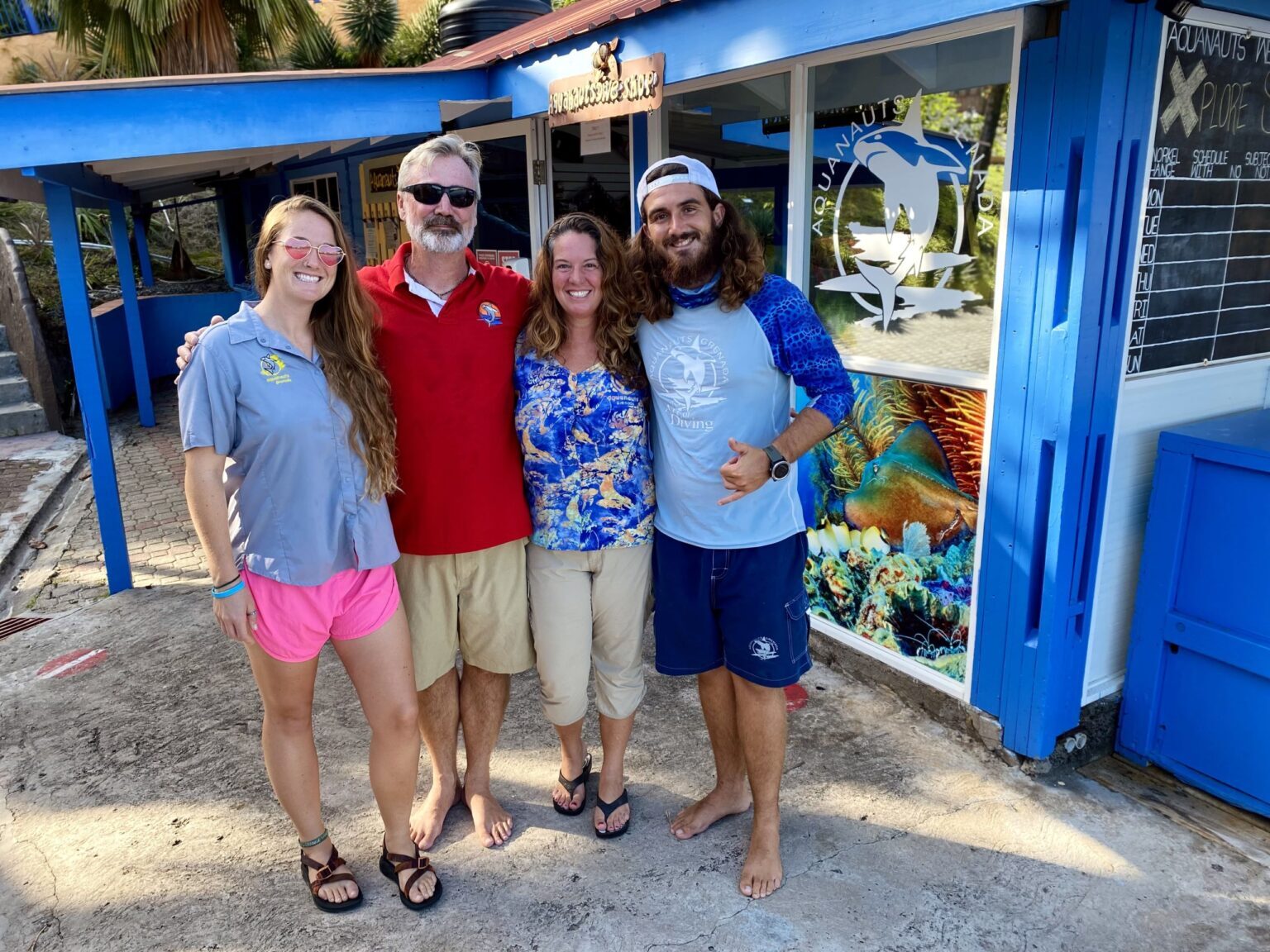Sustainable Tourism at Its Best: Now, Mount Kenya Wildlife Conservancy Recognized in 2025 Tripadvisor Awards – Travel And Tour World

Report on Mount Kenya Wildlife Conservancy’s Contribution to Sustainable Tourism and Development Goals
Introduction: Global Recognition and Alignment with SDGs
The Mount Kenya Wildlife Conservancy (MKWC) has achieved significant international recognition by being named in the 2025 Tripadvisor Travellers’ Choice Awards, placing it within the top 10% of global attractions. This accolade, based on 2024 visitor data, underscores Kenya’s growing prominence in conservation tourism. The success of MKWC provides a tangible model for integrating tourism with the United Nations Sustainable Development Goals (SDGs), particularly in the areas of economic growth, environmental protection, and education.
Conservation Impact and Contribution to SDG 15: Life on Land
MKWC’s core mission is the protection of terrestrial ecosystems and biodiversity, directly contributing to the targets of SDG 15.
The Mountain Bongo National Recovery and Action Plan
The conservancy is central to the survival of the critically endangered Mountain Bongo, with fewer than 100 individuals remaining in the wild. Key initiatives include:
- A dedicated breeding and rewilding program to increase the wild population.
- The establishment of the 776-acre Mawingu Sanctuary in 2022, the world’s first sanctuary purpose-built for the species.
- The successful release of ten Bongos into the sanctuary, resulting in four subsequent births, demonstrating program viability.
Biodiversity and Habitat Preservation
Beyond the Bongo program, MKWC actively supports broader biodiversity through:
- The operation of an Animal Orphanage that provides sanctuary for over 28 different species, including the rare white zebra, pygmy hippo, and cheetah.
- Restoration of the indigenous montane forest ecosystem within the Mawingu Sanctuary.
- Visitor engagement that directly funds habitat protection and anti-poaching patrols.
Economic and Social Development: Advancing SDG 8 and SDG 12
The conservancy’s tourism model promotes sustainable economic growth and responsible consumption patterns.
Economic Impact Analysis and Projections
MKWC generates significant economic benefits for the Mount Kenya region, contributing to SDG 8 (Decent Work and Economic Growth).
- 2024 Performance: The facility attracted approximately 3,600 international visitors, resulting in $4.3 million in direct spending and a total economic contribution of $15.1 million. This activity supported an estimated 287 local jobs.
- 2025 Projections: Following the Tripadvisor award, a 15.4% increase in visitor arrivals is forecast.
- 2027 Targets: The conservancy aims to host 5,320 visitors annually, with a projected regional economic impact exceeding $22 million.
Fostering Responsible Consumption and Production (SDG 12)
MKWC’s model encourages sustainable tourism where consumer choices support conservation outcomes. The average visitor expenditure of $1,200 demonstrates a willingness among travellers to invest in high-value, impactful experiences that align with principles of environmental stewardship.
Educational Initiatives and Community Engagement: Supporting SDG 4
The William Holden Wildlife Education Centre
In alignment with SDG 4 (Quality Education), MKWC promotes conservation literacy and sustainable development education. The William Holden Wildlife Education Centre is a cornerstone of this effort, providing educational programs to over 10,000 schoolchildren annually. This initiative fosters a deep, lasting connection between local communities and their natural heritage, building a foundation for future conservation leadership.
Strategic Implications and Partnerships for the Goals (SDG 17)
MKWC’s success offers a strategic blueprint for the broader East African tourism market and exemplifies the power of multi-stakeholder partnerships.
Market Opportunities in Eco-Tourism
The global eco-tourism market is projected to reach $37.1 billion by 2030. MKWC’s recognition positions Kenya as a leader in this high-growth sector, creating opportunities for travel professionals to develop and market new conservation-focused tourism products that meet the demand for sustainable travel.
A Replicable Model for Sustainable Development
The conservancy’s operational framework serves as a powerful example of SDG 17 (Partnerships for the Goals). It successfully integrates:
- Wildlife conservation and habitat restoration.
- Community-based economic development and job creation.
- Private sector tourism that generates revenue for sustainable initiatives.
- Educational outreach to ensure long-term community buy-in.
This integrated model demonstrates a viable pathway for other destinations in Africa to leverage their natural assets for sustainable development, ensuring that tourism contributes positively to both local economies and global conservation priorities.
Analysis of Sustainable Development Goals in the Article
-
Which SDGs are addressed or connected to the issues highlighted in the article?
The article on the Mount Kenya Wildlife Conservancy (MKWC) highlights several issues and initiatives that directly connect to the following Sustainable Development Goals (SDGs):
-
SDG 8: Decent Work and Economic Growth
The article emphasizes the economic benefits generated by the conservancy. It mentions the creation of local jobs, the direct revenue from international visitors, and the wider economic impact on the Mount Kenya region. This aligns with SDG 8’s aim to promote sustained, inclusive, and sustainable economic growth, full and productive employment, and decent work for all.
-
SDG 12: Responsible Consumption and Production
The core theme of the article is “conservation tourism,” “eco-friendly travel,” and “sustainable travel.” It describes a model where tourism is conducted responsibly to minimize environmental impact and maximize social and economic benefits. This directly relates to SDG 12, which aims to ensure sustainable consumption and production patterns, particularly in the tourism sector.
-
SDG 15: Life on Land
This is the most prominent SDG in the article. The MKWC’s primary mission is the conservation of terrestrial ecosystems and biodiversity. The text details efforts to protect a critically endangered species (the Mountain Bongo), restore forest habitats, and shelter a variety of other animals. This directly supports SDG 15’s goals to protect, restore, and promote sustainable use of terrestrial ecosystems and halt biodiversity loss.
-
SDG 4: Quality Education
The article mentions the William Holden Wildlife Education Centre at MKWC, which educates thousands of schoolchildren annually on “conservation literacy.” This initiative connects to SDG 4, which aims to ensure inclusive and equitable quality education and promote lifelong learning opportunities, including education for sustainable development.
-
-
What specific targets under those SDGs can be identified based on the article’s content?
Based on the article’s content, the following specific targets can be identified:
-
Target 8.9: Promote sustainable tourism
The article describes how MKWC’s success in conservation tourism creates jobs and boosts the local economy. It explicitly states that the conservancy “helped create or sustain around 287 local jobs” and supports local businesses from “guide services to honey sold at roadside stalls.” This directly aligns with Target 8.9, which is to “devise and implement policies to promote sustainable tourism that creates jobs and promotes local culture and products.”
-
Target 12.b: Monitor sustainable tourism impacts
The article highlights the Tripadvisor award, which is based on “genuine visitor reviews and ratings.” This serves as an external monitoring tool for the success and impact of MKWC’s sustainable tourism model. The conservancy’s own projections on visitor growth and economic impact also imply a system of monitoring, which relates to Target 12.b: “Develop and implement tools to monitor sustainable development impacts for sustainable tourism.”
-
Target 15.5: Protect threatened species and natural habitats
The central focus of the article is MKWC’s work to save the Mountain Bongo, a species with “fewer than 100 left in the wild.” The establishment of the “776-acre Mawingu Sanctuary” and the successful breeding program are direct actions to “protect and prevent the extinction of threatened species” and “reduce the degradation of natural habitats,” as outlined in Target 15.5.
-
Target 15.7: End poaching and trafficking of protected species
The article implies action against illegal wildlife activities by mentioning that tourism revenue “keeps rangers on the trail.” This supports Target 15.7, which calls for urgent action to “end poaching and trafficking of protected species of flora and fauna.”
-
Target 4.7: Education for sustainable development
The article states that the “William Holden Wildlife Education Centre at MKWC, welcoming over 10,000 schoolchildren each year, strengthens this effort by deepening community involvement and conservation literacy.” This is a direct implementation of Target 4.7, which aims to ensure all learners acquire knowledge and skills for sustainable development.
-
-
Are there any indicators mentioned or implied in the article that can be used to measure progress towards the identified targets?
Yes, the article provides several quantitative and qualitative indicators that can be used to measure progress:
-
Indicators for Target 8.9 (Sustainable Tourism):
- Tourism’s contribution to GDP: The article quantifies the economic impact with figures like “$4.3 million” in direct spending and a total contribution of “$15.1 million,” with a projection to surpass “$22 million” by 2027.
- Number of jobs in the tourism sector: The article specifies that the conservancy helped “create or sustain around 287 local jobs.”
-
Indicators for Target 12.b (Monitoring Sustainable Tourism):
- Visitor numbers: The article provides current visitor data (“about 3,600 international visitors” in 2024) and future targets (“a 15.4% jump in visitors for 2025” and “5,320 visitors a year” by 2027).
- Qualitative assessments: The “Tripadvisor Travellers’ Choice Awards” ranking, based on visitor reviews, serves as a qualitative indicator of the success of the sustainable tourism model.
-
Indicators for Target 15.5 (Protecting Species and Habitats):
- Status of threatened species: The article provides numbers for the Mountain Bongo population: “fewer than 100… left in the wild,” “Ten Bongos have been released,” and “four of them have given birth.” These numbers are direct indicators of the conservation program’s progress.
- Extent of protected areas: The creation of the “776-acre Mawingu Sanctuary” is a specific indicator of habitat protection.
- Biodiversity count: The mention of sheltering “more than 28 discrete species” in the Animal Orphanage is an indicator of biodiversity conservation.
-
Indicators for Target 4.7 (Education for Sustainable Development):
- Number of learners reached: The article states that the education center welcomes “over 10,000 schoolchildren each year,” providing a clear metric for its educational outreach.
-
-
Table of SDGs, Targets, and Indicators
SDGs Targets Indicators SDG 8: Decent Work and Economic Growth Target 8.9: By 2030, devise and implement policies to promote sustainable tourism that creates jobs and promotes local culture and products. - Total economic contribution of $15.1 million.
- Projected economic impact to surpass $22 million by 2027.
- Creation or sustenance of 287 local jobs.
SDG 12: Responsible Consumption and Production Target 12.b: Develop and implement tools to monitor sustainable development impacts for sustainable tourism. - Tripadvisor Travellers’ Choice Award based on visitor ratings.
- 3,600 international visitors in 2024.
- Projected 15.4% jump in visitors for 2025.
SDG 15: Life on Land Target 15.5: Take urgent and significant action to reduce the degradation of natural habitats, halt the loss of biodiversity and… protect and prevent the extinction of threatened species. - Conservation of the Mountain Bongo (fewer than 100 in the wild).
- Successful birth of 4 Bongo calves in the sanctuary.
- Establishment of the 776-acre Mawingu Sanctuary.
- Sheltering of over 28 different species in the Animal Orphanage.
SDG 4: Quality Education Target 4.7: By 2030, ensure that all learners acquire the knowledge and skills needed to promote sustainable development. - The William Holden Wildlife Education Centre welcomes over 10,000 schoolchildren each year for “conservation literacy.”
Source: travelandtourworld.com

What is Your Reaction?
 Like
0
Like
0
 Dislike
0
Dislike
0
 Love
0
Love
0
 Funny
0
Funny
0
 Angry
0
Angry
0
 Sad
0
Sad
0
 Wow
0
Wow
0















































































